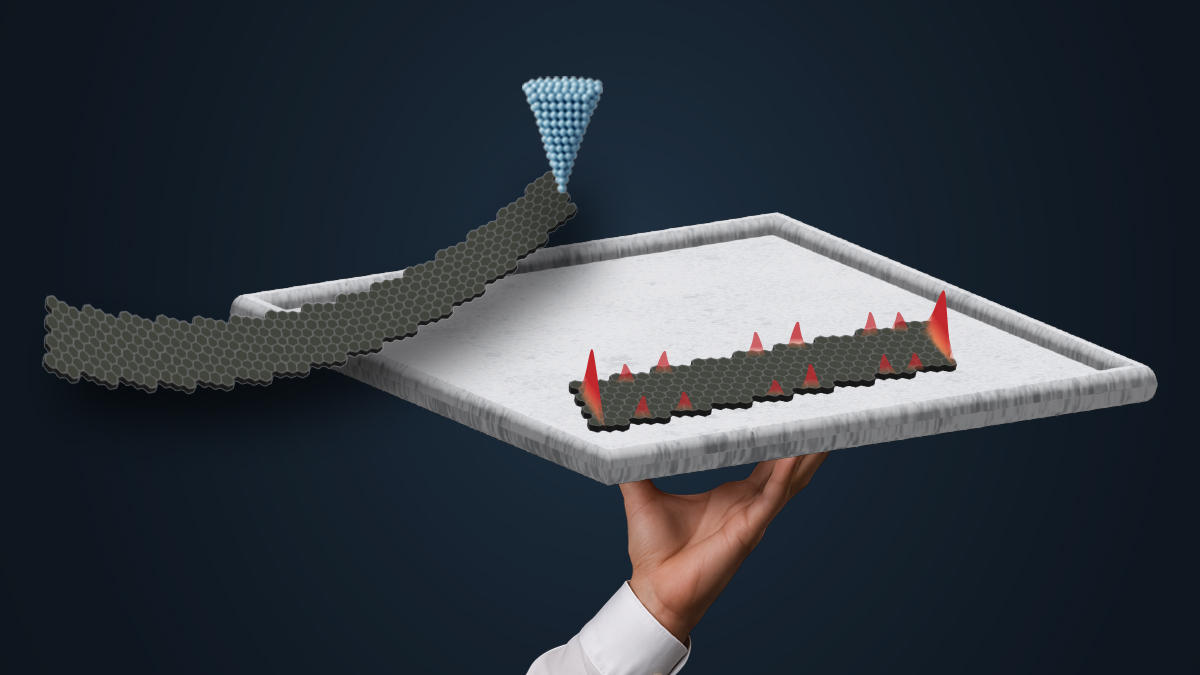INMA researchers create magnetic quantum bits made only of carbon
A team from the Aragon Nanoscience and Materials Institute (INMA), a joint centre of the CSIC and the University of Zaragoza, has managed to control the quantum behaviour of graphene nano-ribbons, which is a key step towards the creation of carbon based quantum bits. The finding has been published in the high impact journal Nature Communications.
Quantum bits (qubits) are the basis for building quantum computers, which will overcome current limitations of computing power and solve problems that are impossible (or very slow) for nowdays computers.
Zaragoza, 2nd July 2025. A team from the Aragon Nanoscience and Materials Institute (INMA), a joint centre of the CSIC and the University of Zaragoza, has achieved control of the quantum behaviour in graphene nanoribbons, which represents a key step towards quantum bits based on organic materials. The finding has been published in the journal Nature Communications, with the collaboration of researchers from Nanogune (San Sebastian) and CiQUS (University of Santiago de Compostela), as well as theoreticians from the Donostia International Physics Centre. All the experiments were carried out at the Advanced Microscopy Laboratory in Zaragoza.
A quantum bit, or qubit, is the basic unit of information in a quantum computer, and is the quantum equivalent of the classical bit (which can take values 0 or 1).
The fundamental difference is that a qubit can be in a 0 state, a 1 state, or a combination of both at the same time. This is called quantum superposition. Thanks to this property (and others such as quantum entanglement), quantum computers can process large amounts of information in parallel, solving certain problems much faster than traditional computers.
This work places INMA at the forefront in the field of materials for quantum computing, which will play a key role in the coming decades. The researchers have demonstrated how to control both electric charge and quantum magnetism in strips of graphene – a material consisting in a single atomic layer of carbon atoms. These structures, called nano-ribbons, are just 1 nanometre wide and between 4 and 13 nanometres long, and can be used as quantum bits – the basic units of future quantum computers.
The nano-ribbons are made by fusing precursor molecules together, as if they were LEGO pieces, using a technique called ‘surface synthesis’. In order to preserve their quantum properties, the INMA scientists managed to isolate them from the metal in which they were formed, transferring them one by one to an insulating surface of magnesium oxide (MgO) with the help of a scanning tunnelling microscope.
On this insulating surface, the nanowires exhibit the expected quantum behaviour if they were isolated in the vacuum: they contain an integer number of electrons (i.e. the charge is quantized) and, for certain lengths, they generate a well-defined spin – spin is the minimum unit or quantum of information for magnetic quantum bits.
How important is this?
This work is the first to show that an extended structure made solely of carbon can behave like a magnetic quantum bit. In addition, the scientists have shown that quantum spin can be turned on or off by external electric fields, opening up new possibilities for designing quantum materials at will.
Researcher contact: David Serrate, CSIC Research Scientist.
Cover photo: The STM tip moves the graphene nanostrips from the metal in which they are synthesised to square patches of insulating MgO. Once placed on the insulating plate, depending on their length, some nanostrips acquire a magnetic state of spin 1/2 quantum. This spin is distributed as indicated by the reddish density map. The example strip could take quantized spin values of plus or minus 1/2 and be used as a quantum bit with far fewer errors than nowadays operations quantum bits. David Serrate and Sara Muttoni.
02-07-2025









